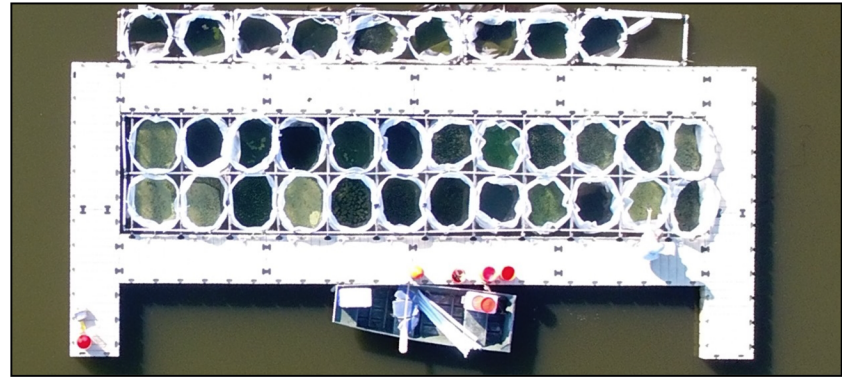Keyword: Chemical Control

Buley, R. P., C. Adams, A. P. Belfiore, E. G. Fernandez-Figueroa, M. F. Gladfelter, B. Garner, D. L. Straus, and A. E. Wilson. 2021. Field evaluation of seven products to control cyanobacterial blooms in aquaculture. Environmental Science and Pollution Research 28:29971-29983.
Abstract
Harmful algal blooms negatively impact water quality in hypereutrophic systems that are common in aquaculture. However, few algaecides are approved for use in food-fish aquaculture. This study assessed the effectiveness of seven products, including hydrogen peroxide (as a concentrated liquid or in granular form (PAK-27)), peracetic acid (as VigorOx SP-15 and Peraclean), copper (as copper sulfate in unchelated (powder) or chelated (Captain) forms), and a clay-based product (as Phoslock) on phytoplankton (including cyanobacteria) and zooplankton biomass. Each product was tested in a 14-day laboratory and 35- day field experiment to assess their short- and long-term performance. Although some products (i.e., copper-based and liquid hydrogen peroxide) quickly reduced phytoplankton, effects were short-lived given that chlorophyll concentrations returned to starting concentrations within 21 days. In contrast, all but one product (i.e., concentrated liquid hydrogen peroxide) maintained low phycocyanin concentrations for 35 days. Zooplankton biomass trends showed large, negative effects for most algaecides; however, zooplankton rebounded for most treatments except for copper-based products. In general, copper-based products remain the most efficient and cheapest choice to reduce total phytoplankton biomass in aquaculture systems. However, peracetic acid-based products effectively and quickly reduced cyanobacteria while having marginal effects on beneficial algae and zooplankton. Such algaecides could be effective alternatives to copper-based products for aquaculture farmers. Hydrogen peroxide . Peracetic acid . Copper . Clay . Harmful algal blooms . Chemical control